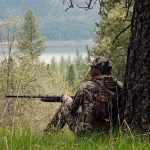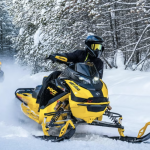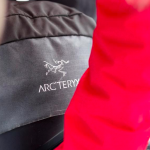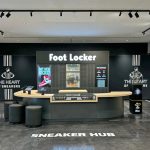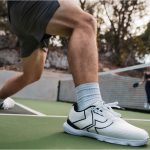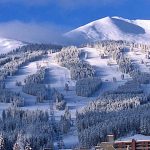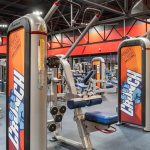Chain store sales were down 8.2 percent for the beginning of the winter sports season (August through October ) compared to the same period in 2002 according to the SnowSports Industries America (SIA) Retail Audit. In dollars, that translates to $59.7 million in sales compared to $64.9 million in 2002. The unit sales tracked 8.3 percent behind last year. The SIA Retail Audit tracks and reports sales in all snow sports product categories. SIA is the not-for-profit industry trade group that represents manufacturers and distributors of snow sports products. This is the first report of six that looks at sales through March 31, 2004, the end of the winter season.
All equipment (alpine, snowboard, Nordic and telemark) for chain stores was down 7.0 percent to $14.5 million from $15.6 million in 2002; however, units gained 7.5 percent. Alpine equipment (including skis, boots, bindings and poles) was up just slightly (0.76 percent) to $7.9 million as compared to $7.8 million last year; however, units gained 18 percent. Snowboard equipment (including boards, boots and bindings) was down 18.1 percent to $5.9 million in sales. Sales for snowboard equipment in 2002 tracked at $7.3 million. Nordic equipment (including skis, boots, bindings and poles), a bright spot, was up 21.2 percent to $450,358. Telemark equipment (including skis, boots and bindings), a new category in the Retail Audit, tracked at $188,981 (up 98.9 percent).
Both apparel and accessories were down in chain stores. Apparel was down 11.8 percent to $25.3 million as compared to $28.7 million last season while accessories declined 4.1 percent to $19.8 million as compared to 2002, which was $20.7 million.
Ski Binding System Sales Trend is Hitting Chains
Alpine ski sales (including ski binding systems) increased 9.1 percent in dollars to $4 million while units gained 28.1 percent. Increases were due to the sale of ski binding systems. Much lower average retail prices on ski binding systems jump started sales (up 286.1 percent in dollars). Last year average retail for systems were $511 compared to $338 this season. According to Scott Jaeger of Leisure Trends Group, “Chains have picked up on the trend and are moving systems at exponential rates at cut-rate prices.”
In addition, the largest unit sales category, Midfat skis, were down 3.1 percent to $1.5 million though units increased 27.5 percent. The action was in junior skis which were up 30.9 percent to $229,768. Fat skis gained 71.5 percent in dollars to $164,520. Twin tips (down 4.4 percent), carve (down 57.1 percent) and skiboards (down 61.9 percent) all tracked behind.
Unit sales for alpine boots were at an exact 1 to 1 ratio to the number of alpine skis (including ski binding systems) sold. Alpine boot sales increased 5.0 percent to $2.7 million. High performance boots are hot this year, increasing 45.8 percent to $727,961, outselling both sport and recreation. Both sport (down 22.5 percent to $539,697) and recreation (down 15.7 percent to $447,517) declined in preseason sales. Soft boot sales were anything but soft as dollars increased 74.3 percent to $211,489. However, the average retail price was slashed from $220 last season to $106. Junior boot dollars increased 8.9 percent ($116,490) on a doubling of unit sales over last preseason.
Stand alone alpine binding sales declined 8.4 percent to $929,066. Adding back in unit sales for bindings to ski binding systems, sales were up 26.6 percent. The DIN 8-11 were down 10.2 percent while DIN 12-14 made gains of 14.1 percent in dollars. Junior bindings were up 11.6 percent to $79,115. Alpine poles declined 51.3 percent to $303,457. Junior poles, at only $9 average retail, flew out the door at a rate 66 percent faster than last year.
Snowboard Units Up but Dollars Decline
Snowboard sales are having a rough time in chain stores. The main reason is the average retail selling price is $33 less than last season. Boards declined 14.4 percent in dollars to $3.0 million; however, units increased 5.2 percent. The two largest categories in terms of unit sales both saw gains in preseason dollar sales. Freeride and freestyle boards gained 5.0 percent to $1.3 million and 9.4 percent in dollars to $581,864 million, respectively. In chain stores, junior snowboards are selling more
units than women's although both have seen double digit increases in unit sales. Junior boards are up 23.3 percent and women's, 49.8 percent.
Both snowboard boots and bindings declined in the double digits. Boots decreased 15.0 percent in dollars to $1.8 million while bindings tracked behind 30.2 percent in dollars to $1.2 million. Non step-in boots and bindings both declined in dollars, 4.6 percent and 24.8 percent, respectively.
Junior Snowboard Apparel is Hot in Chains
Alpine apparel got off to a slow start in chain stores. Alpine tops declined 11.7 percent in dollars to $18.4 million and units were down 9.6 percent. The only categories to see any type of increase were softshell parkas (up 116.4 percent to $346,282) and sweaters (up 26.9 percent to $1.3 million). Insulated parkas and shell parkas both saw declines, 17.4 percent and 18.1 percent, respectively.
Alpine bottoms struggled even more, declining 24.4 percent in dollars to $3.0 million. The only bottom's categories to see any up tick were bibs (up 78.8 percent to $253,267) and softshell waist pants (up 86.7 percent to $32,806).
Snowboard apparel fared slightly better (up 0.06 percent in dollars to $3.6 million). Snowboard tops were up (6.5 percent in dollars to $2.2 million) while snowboard bottoms were down (5.1 percent in dollars to $1.1 million). The junior snowboard apparel helped the category as a whole. Junior snowboard tops gained 48.4 percent to $369,105 and bottoms were up 11.7 percent to $141,559. Women's tops stayed strong (up 21.7 percent to $767,301).
Snowdecks/Skates Were a Hot Seller in Chains
Equipment accessories were up 8.1 percent to $11.1 million. The hottest seller in chain stores this preseason were sunglasses, gaining 36 percent in dollars to $5.2 million. All other categories, including snowdecks/skates (down 44.3 percent to $29,590), goggles (down 0.3 percent to $508,337), auto racks (down 23.5 percent to $1.4 million), snowshoes (down 18.1 percent to $209,292) and helmets (down 31.2 percent to $792,670) saw declines.
Apparel accessories had even a rougher time of it. This category was down even more at 15.9 percent to $8.8 million. Winter boots did fairly well, gaining 36.6 percent to $607,691. All other categories did not advance including gloves (down 22.2 percent to $1.2 million), mitts (down 18.1 percent to $281,899), socks (down 51.2 percent to $647,068), base layer (down 13.9 percent to $2.7 million), turtlenecks (down 7.7 percent to $204,392) and headwear (down 3.6 percent to $1.2 million).



